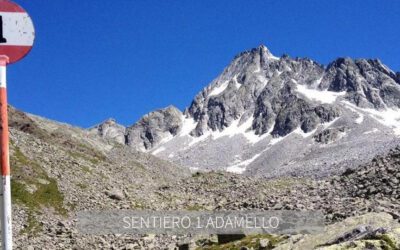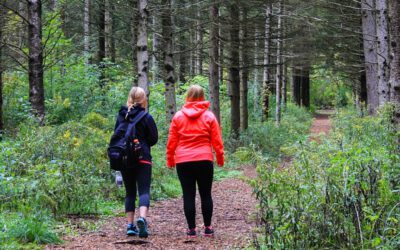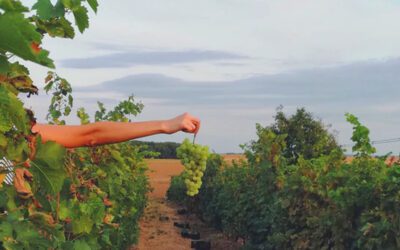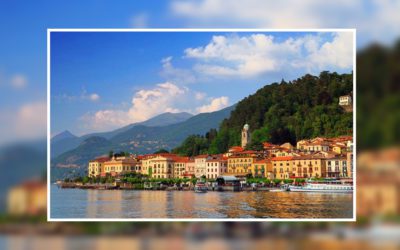Bed and breakfast hotel; price per person in double room:
3 star hotel Bergamo and province: € 35
4 star hotel Bergamo and province: € 40
Hiking in the Orobic Alps
The Sentiero delle Orobie, which develops along the mountains of the Province of Bergamo, offers the opportunity to immerse oneself in the heart and in the wildest areas of these Alps, giving truly suggestive views of the environment.
Eno-gastronomic routes and food experience
In Bergamo you can eat wonderfully. The typical delicacies range from the Scarpinòcc and Capu of Parre to the polenta taragna of the Valbrembana, from the spalla cotta of Schilpario to the barbed corn of Gandino and rostrato rosso of Rovetta, but also the raviolo of Covo, and the numerous fresh or aged cheeses, 9 of which are D.O.P. (Protected Designation of Origin) certified.
Art tours
From the wooden sculptures of the Fantoni to the portraits of Moroni, passing by Cima da Conegliano, Palma il Vecchio, Cavagna, Cifrondi, Baschenis, Carnovali… There are many people from Bergamo who have left their mark on art. This sign is often present, especially in the land where these artists were born and raised.
Music of Bergamo
Gaetano Donizetti and Simone Mayr, but also the famous cellist Alfredo Piatti or the Roman tenor Giovanni Battista Rubini, true legends of classical music and opera of the 1800s, up to the conductor Gianandrea Gavazzeni.
Industrial archaeology
Bergamo was a land of silk mills, cotton mills, lineries, wool mills, especially between the nineteenth and twentieth centuries, but also cradle of the Italcementi Group. There are still many possibilities to imagine that lost world, thanks to the redevelopment of many of these giant industrial complexes where once entire towns or valleys found work: Alzano Lombardo, Ponte Nossa, Martinengo, Ghisalba, Caprino Bergamasco…
Art Nouveau in the valleys
The most striking example is San Pellegrino, with its center and its Casino, just restored to its former glory, but also the Spa. And then the Presolana Pass, where the Milanese and Swiss industrialists of the early 1900s, with their luxurious villas, invented the concept of holidays in the modern sense of the term.
The Tasso family and the first postal service
Cornello dei Tasso, in Valbrembana, preserves the remains of the important family that invented and administered for decades the postal service of half of Europe. The word “taxi” is said to come from them.
The old, large trade routes of Valbrembana
Echoes of a world that no longer exists, but that was based, then as now, on the great trade and communication routes. The western Orobie are a bit less impervious than the eastern ones: in Val Brembana you could follow the via Mercatorum, the Taverna road, up to the seventeenth-century via Priùla, that allowed you to connect Bergamo to the San Marco Pass and then to the Valtellina. Nowadays, the ancient routes still reserve fascinating surprises.
Lost arts and crafts
The production of the famous “coti stones” of Pradalunga and Nembro, the stone roofs (the piöde) of the Imagna Valley or the slate roofs of the upper Valseriana, the glorious forges on the Goglio stream, where the swords of Milan were forged; the hammers and the art of the “ciödarói”, the zinc mines of the Valle del Riso and Val Serina, the iron mines of the Val di Scalve up to the true European fulcrum of the 20th century textile sector: the Valgandino.
Ancient manors
There are many castles in Bergamo that can still be seen today in all their splendid magnificence: Pagazzano, Marne, Malpaga, Cavernago, but also Bianzano, Urgnano, Solza, Costa di Mezzate … a journey rich in history, but also in disturbing crimes and mysteries, with a name that almost always peeps out: the name of the most famous Bergamo-born ever: Bartolomeo Colleoni.
In the footsteps of the ancient people from the Orobic Alps
The ancient ravines of our mountains have sometimes shown signs of the plight and life of the proto-Celtic civilizations that settled here before the Romans: from the ancient Parra (Parre) to the walls of Ca’ Marta (Brembilla), from the mysterious erratic rock of Val Sedornia (Gandellino) to the rock carvings of the Carona mountains.
Water: the great wealth of the Bergamo valleys
It was the wealth of water in the Bergamo area that attracted Swiss entrepreneurs at the end of the 19th century. Today, however, the water of Bergamo is drunk, above all. San Pellegrino is undoubtedly one of the Italian symbols in the world, but there are at least ten Bergamo mineral waters on the market today. However, the Nossana spring is not bottled, but goes straight to Bergamo to be drunk directly from the city’s taps.
Wellness and Thermalism
The most famous are those of San Pellegrino, which have just been relaunched; however, whether for wellness or treatment, there are several others Spa in the Bergamo area: Trescore Balneario, Sant’Omobono, Gaverina. Now that this type of wellness is finally rediscovered, Bergamo has all the means to be found ready.
Religious and Faith-based Itineraries
The land of Bergamo has always been one of fervent Catholic worship. There are at least thirty Marian sanctuaries in the mountain valleys, three basilicas in the Seriana Valley alone, all incredibly rich in ideas of faith and art (the Danza Macabra in Clusone, for example). Moving south, there are many other treasures to visit: from the Sanctuary of Santa Maria del Fonte in Caravaggio to the Rotonda di San Tomé in Almenno San Bartolomeo.
The dark mysteries of the caves
Few people know it, but the Bergamo valleys are full of spectacular caves. Some are impervious and dangerous, but many others can be visited: from the Imagna Valley to the Brembana Valley, without forgetting Fonteno and the upper Seriana Valley, there are many opportunities to stay in suspense by putting your nose inside the bowels of the earth, which have remained untouched for thousands of years.
Tutte le proposte
Hiking in the Orobic Alps
The Sentiero delle Orobie, which develops along the mountains of the Province of Bergamo, offers the opportunity to immerse oneself in the heart and in the wildest areas of these Alps, giving truly suggestive views of the environment.
Eno-gastronomic routes and food experience
In Bergamo you can eat wonderfully. The typical delicacies range from the Scarpinòcc and Capu of Parre to the polenta taragna of the Valbrembana, from the spalla cotta of Schilpario to the barbed corn of Gandino and rostrato rosso of Rovetta, but also the raviolo of Covo, and the numerous fresh or aged cheeses, 9 of which are D.O.P. (Protected Designation of Origin) certified.
Art tours
From the wooden sculptures of the Fantoni to the portraits of Moroni, passing by Cima da Conegliano, Palma il Vecchio, Cavagna, Cifrondi, Baschenis, Carnovali… There are many people from Bergamo who have left their mark on art. This sign is often present, especially in the land where these artists were born and raised.
Music of Bergamo
Gaetano Donizetti and Simone Mayr, but also the famous cellist Alfredo Piatti or the Roman tenor Giovanni Battista Rubini, true legends of classical music and opera of the 1800s, up to the conductor Gianandrea Gavazzeni.
Industrial archaeology
Bergamo was a land of silk mills, cotton mills, lineries, wool mills, especially between the nineteenth and twentieth centuries, but also cradle of the Italcementi Group. There are still many possibilities to imagine that lost world, thanks to the redevelopment of many of these giant industrial complexes where once entire towns or valleys found work: Alzano Lombardo, Ponte Nossa, Martinengo, Ghisalba, Caprino Bergamasco…
Art Nouveau in the valleys
The most striking example is San Pellegrino, with its center and its Casino, just restored to its former glory, but also the Spa. And then the Presolana Pass, where the Milanese and Swiss industrialists of the early 1900s, with their luxurious villas, invented the concept of holidays in the modern sense of the term.
The Tasso family and the first postal service
Cornello dei Tasso, in Valbrembana, preserves the remains of the important family that invented and administered for decades the postal service of half of Europe. The word “taxi” is said to come from them.
The old, large trade routes of Valbrembana
Echoes of a world that no longer exists, but that was based, then as now, on the great trade and communication routes. The western Orobie are a bit less impervious than the eastern ones: in Val Brembana you could follow the via Mercatorum, the Taverna road, up to the seventeenth-century via Priùla, that allowed you to connect Bergamo to the San Marco Pass and then to the Valtellina. Nowadays, the ancient routes still reserve fascinating surprises.
Lost arts and crafts
The production of the famous “coti stones” of Pradalunga and Nembro, the stone roofs (the piöde) of the Imagna Valley or the slate roofs of the upper Valseriana, the glorious forges on the Goglio stream, where the swords of Milan were forged; the hammers and the art of the “ciödarói”, the zinc mines of the Valle del Riso and Val Serina, the iron mines of the Val di Scalve up to the true European fulcrum of the 20th century textile sector: the Valgandino.
Ancient manors
There are many castles in Bergamo that can still be seen today in all their splendid magnificence: Pagazzano, Marne, Malpaga, Cavernago, but also Bianzano, Urgnano, Solza, Costa di Mezzate … a journey rich in history, but also in disturbing crimes and mysteries, with a name that almost always peeps out: the name of the most famous Bergamo-born ever: Bartolomeo Colleoni.
In the footsteps of the ancient people from the Orobic Alps
The ancient ravines of our mountains have sometimes shown signs of the plight and life of the proto-Celtic civilizations that settled here before the Romans: from the ancient Parra (Parre) to the walls of Ca’ Marta (Brembilla), from the mysterious erratic rock of Val Sedornia (Gandellino) to the rock carvings of the Carona mountains.
Water: the great wealth of the Bergamo valleys
It was the wealth of water in the Bergamo area that attracted Swiss entrepreneurs at the end of the 19th century. Today, however, the water of Bergamo is drunk, above all. San Pellegrino is undoubtedly one of the Italian symbols in the world, but there are at least ten Bergamo mineral waters on the market today. However, the Nossana spring is not bottled, but goes straight to Bergamo to be drunk directly from the city’s taps.
Wellness and Thermalism
The most famous are those of San Pellegrino, which have just been relaunched; however, whether for wellness or treatment, there are several others Spa in the Bergamo area: Trescore Balneario, Sant’Omobono, Gaverina. Now that this type of wellness is finally rediscovered, Bergamo has all the means to be found ready.
Religious and Faith-based Itineraries
The land of Bergamo has always been one of fervent Catholic worship. There are at least thirty Marian sanctuaries in the mountain valleys, three basilicas in the Seriana Valley alone, all incredibly rich in ideas of faith and art (the Danza Macabra in Clusone, for example). Moving south, there are many other treasures to visit: from the Sanctuary of Santa Maria del Fonte in Caravaggio to the Rotonda di San Tomé in Almenno San Bartolomeo.
The dark mysteries of the caves
Few people know it, but the Bergamo valleys are full of spectacular caves. Some are impervious and dangerous, but many others can be visited: from the Imagna Valley to the Brembana Valley, without forgetting Fonteno and the upper Seriana Valley, there are many opportunities to stay in suspense by putting your nose inside the bowels of the earth, which have remained untouched for thousands of years.
Look at the other proposals for Destinazione Sole
TOUR GUIDATO IN VALLE BREMBANA
Tour guidato di 3 giorni / 2 notti in Valle Brembana. Quota individuale di partecipazione: da € 250
Fondazione Paolo e Carolina Zani per l’arte e la cultura
La Fondazione Paolo e Carolina Zani per l’arte e la cultura persegue lo scopo di tutelare, conservare e valorizzare la Casa Museo Zani e la collezione d’arte in essa contenuta.
Da nord a sud lungo i fiumi
Un viaggio “in discesa” alla scoperta delle dimore storiche della Lombardia, costeggiando i principali fiumi, Adda, Serio, Ticino, Po e Mincio, da nord a sud
Dal Lago Maggiore al Garda
Un viaggio alla scoperta delle dimore storiche della Lombardia settentrionale
Bike tour dal lago al mare
Partenza da Peschiera (Lago di Garda) – Mantova – Ostiglia – Ferrara – Serravalle – Lido di Comacchio
Trekking – Sentiero del Viandante
Un meravigliosa 3 giorni lungo sentieri panoramici che attraversano tutto il Lago di Como. Una cavalcata tra paesaggi mozziafiato respirando la storia e gustando una natura incontaminata.
Trekking – Sentiero 1 Adamello
Sei giorni di trekking lungo le meravigliose montagne granitiche della Val Camonica, al cospetto del meraviglioso Adamello.
Trekking – Giro delle Orobie
Da Ardesio al Rifugio Laghi Gemelli – Rifugio Longo – Rifugio Brunone – Rifugio Curò – Rifugio Albani – Ardesio
Trekking alle Isole Eolie
Escursione a Vulcano “Nel Gran Cratere” – Stromboli “Iddu il faro del mediterraneo” – Lipari “La via della pomice” – Salina con escursione al lago salato e alle grotte dei Saraceni.
Trekking sulla Costiera Amalfitana
Valle dei Mulini – Sentiero degli Dei da Agerola a Positano – Sentiero dei limoni da Maiori ad Amalfi
Bike tour in Val d’Orcia
Via Francigena – Terme di Bagno Vignoni – Abbazia di sant’Antimo – Montalcino – strada del Brunello – Montepulciano
Trekking alle Pale di San Martino sulle Dolomiti
Da Pass Valles al Rifugio Mulaz per Vetta del Mulaz – da Rifugio Mulaz a Rifugio Pedrotti alla Rosetta per Cima Rosetta – da Rifugio Rosetta al Rifugio Pradidali per Cima Fradusta – da Rifugio Pradidali a San Martino di Castrozza
Gita in Val di Non con raccolta delle mele
Vieni con noi nel giardino delle profumatissime Golden e delle Renette Canada, le varietà forse più conosciute ed apprezzate nel mondo.
Campus per ragazzi
Campus per ragazzi, completamente immersi nella natura lontani dalla città per imparare divertendosi attraverso il gioco e la condivisione
Navigazione fluviale sul fiume Adda
Una nuova occasione per scoprire il fiume… dal fiume
Vivi in prima persona l’esperienza della vendemmia
La vendemmia è una delle esperienze più affascinanti che si possono vivere nella Franciacorta nel periodo che va dalla fine di luglio all’inizio di settembre
I castelli della bergamasca in e-bike
Sport, natura, un tuffo nei castelli del Medioevo e un buon pranzo tipico sono gli ingredienti di questa giornata nella pianura di Bergamo.
I luoghi di papa Giovanni XXIII
La visita di Sotto il Monte ti dà la possibilità di capire la preziosità della vita e degli insegnamenti, di Angelo Roncalli, sacerdote, vescovo e papa.
In cammino con Papa Giovanni XXIII
Possiamo ripercorrere le orme di papa Giovanni XXIII visitando i luoghi in cui ha trascorso i momenti più importanti della vita, attraverso i quali è divenuto quel Papa Buono che tutto il mondo ha amato.
Week end – Sapori e Saperi in alta Valle Seriana
Tour 2 giorni / 1 notte in alta Valle Seriana
Quota individuale di partecipazione: € 250
Vertova, Colzate e Casnigo
Vertova, Colzate e Casnigo:
il dialogo tra arte e fede
Tour guidato di una giornata
Clusone e Rovetta
Medioevo e arte tra il Tiepolo e la bottega dei Fantoni
Tour guidato di una giornata
Quota individuale di partecipazione: € 75
Clusone e Gromo
Visita di una giornata dei borghi di Clusone e Gromo nell’alta Val Seriana con pranzo tipico a Parre
Gromo e Cerete
La Toledo bergamasca e il paese dei mulini
Tuor guidato di una giornata
Quota di partecipazione: € 75
TERRE BORROMEE
Ville e Giardini, traghetti e scorci indimenticabili sul Lago Maggiore: le Isole Borromee sono un paradiso naturale in cui rilassarsi e fare un vero e proprio viaggio nel tempo, tra le loro atmosfere eleganti.
COMO, IL LAGO E LA SUA PROVINCIA
Visite guidate a Como e il suo lago, le ville e giardini … Tremezzo, Bellagio e Varenna. Le perle del Lago di Como
BERGAMO E BRESCIA – I TERRITORI E I LAGHI
L’amore per la nostra città e il desiderio di condividerlo con i miei ospiti sono i valori che guidano il nostro lavoro. Bergamo, Brescia con i loro territori e i laghi … un mondo ancora tutto da scoprire.
BERGAMO – SELVINO
L’altipiano dei cristalli
Tour guidato di una giornata
Quota di partecipazione: € 65
Valtellina – Sport & Adrenalina
Lasciati trasportare dall’adrenalina; e-bike, quad, equitazione, zip-line aerofune, ponte tibetano, canyoning … scopri i nostri programmi sportivi
Trekking “intorno” al Lago di Como
Scopri le nostre proposte di trekking tra storia, natura e panorami che ti entreranno nell’anima … “intorno” al Lago di Como
Itinerari Enogastronomici
Scoprire e vivere la cultura enogastronomica della Valtellina. Incontrare i produttori locali, scoprire le loro tradizioni e ovviamente degustare i prodotti tipici a marchio DOP e IGP: bresaola, formaggi, pizzoccheri, vini, mele.
In barca sul Lago di Como
Una “corsa” sul Lago di Como con barca privata: alla scoperta di ville, borghi, l’esplosione dei colori delle vele che giocano nel vento.
Colico tra lago e montagne
Panorami mozzafiato, splendide passeggiate in bicicletta e poi ancora wind surf, kite surf, canoa, vela, equitazione … Benvenuti sul Lago di Como!
Percorso in Vespa attorno al Lago d’Iseo
Percorso in Vespa attorno al Lago d’Iseo | Quota individuale di partecipazione:
€ 159 singolo – € 209 doppio
Sapori e luoghi lombardi – La Valtellina
Sapori e luoghi lombardi – La Valtellina | Teglio – Tirano – Chiavenna – Abbazia di Piona
Santuari del Trentino
Madonna della Corona – Rovereto – Trento – Santuario di S. Romedio – Madonna di Petralba – Salorno – Lago di Braies – San Candido
Il ducato di Parma e Piacenza
I Castelli, le Fortezze, le Rocche. I sapori del Ducato di Parma e Piacenza
Castell’Arquato – Bardi – Fontanellato – Soragna
La strada del Prosecco
Tour enogastronomico nel Veneto
Treviso – Oderzo – Valdobbiadene – Cismon di Valmarino – Conegliano – Nervosa della Battaglia – Giavera del Montello – Montebelluna – Crocetta del Montello – Asolo
Napoli e Costiera Amalfitana
Napoli – Tour della costiera Amalfitana in barca – Monastero di Montecassino e Gaeta – Caserta
Tour del Cilento
Cava dei Tirreni – Salerno – Paestum – Agropoli – Castellabbate – Certosa di Padula – Grotte di Pertosa – Castelnuovo Cilento
Tre giorni tra la Valtellina e Bernina con il Trenino Rosso
Tre giorni tra la Valtellina e Bernina con il Trenino Rosso
Proposta con hotel 3 stelle a Tirano
Quota individuale di partecipazione: da € 230
Il Vittoriale di Gardone Riviera e Sirmione
Visita guidata al “Vittoriale degli Italiani” a Gardone Riviera e visita a Sirmione, la “perla” del lago di Garda.
La Valcamonica
Le incisioni rupestri della Val Camonica e le tradizioni di Biennio
Piacenza e dintorni
Cultura, monumenti, città d’arte, borghi da scoprire. E’ questa la nostra proposta per una giornata a “ritroso nel tempo”
Tour in Franciacorta
Scegliere i percorsi dedicati alle cantine della Franciacorta non significa solo scoprire un vino, territorio, storia e bellezze naturali incomparabili.. vieni in Franciacorta.
Offerta turistica di itinerari a Bergamo e Provincia
Offerta turistica a Bergamo e provincia | Hotel in pernottamento e prima colazione a persona in camera doppia | Hotel 3 stelle: € 35 | Hotel 4 stelle: € 40 | Bergamo e provincia
La Ciclovia del fiume Oglio
Il fascino della bicicletta è uguale a quello della libertà. Si può andare ovunque, percorrendo strade e luoghi altrimenti non visibili, si possono godere i profumi e gli odori della natura che ci circonda.
Visita di Bergamo e il villaggio operaio di Crespi d’Adda
Una giornata tra i patrimoni UNESCO di Bergamo e il villaggio operaio di Crespi d’Adda. Tour guidato per gruppi, singoli, aziende e istituti scolastici.
Il Villaggio operaio di Crespi D’Adda
Il villaggio operaio di Crespi d’Adda rappresenta uno dei più importanti esempi di archeologia industriale in Italia.
I Santuari Mariani della bergamasca
La Bergamasca è sempre stata e continua ad essere terra di grande religiosità. Vi si possono trovare luoghi molto famosi ai quali giungono pellegrini da tutta Italia e da varie nazioni europee


















































